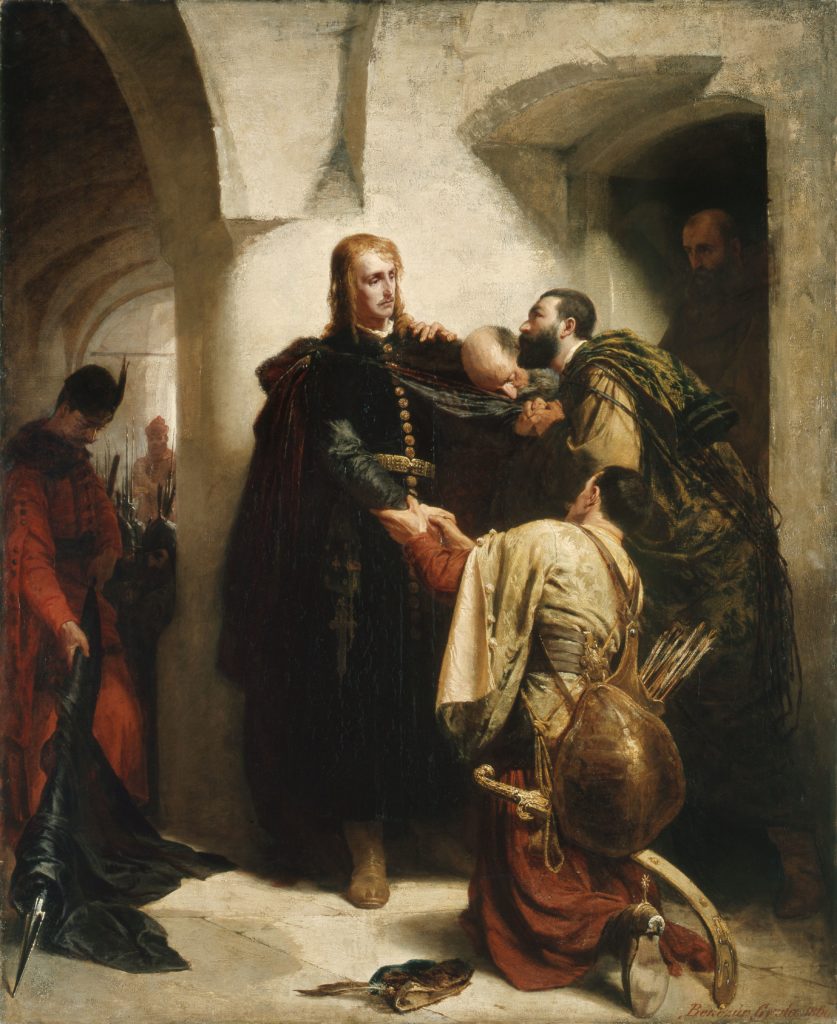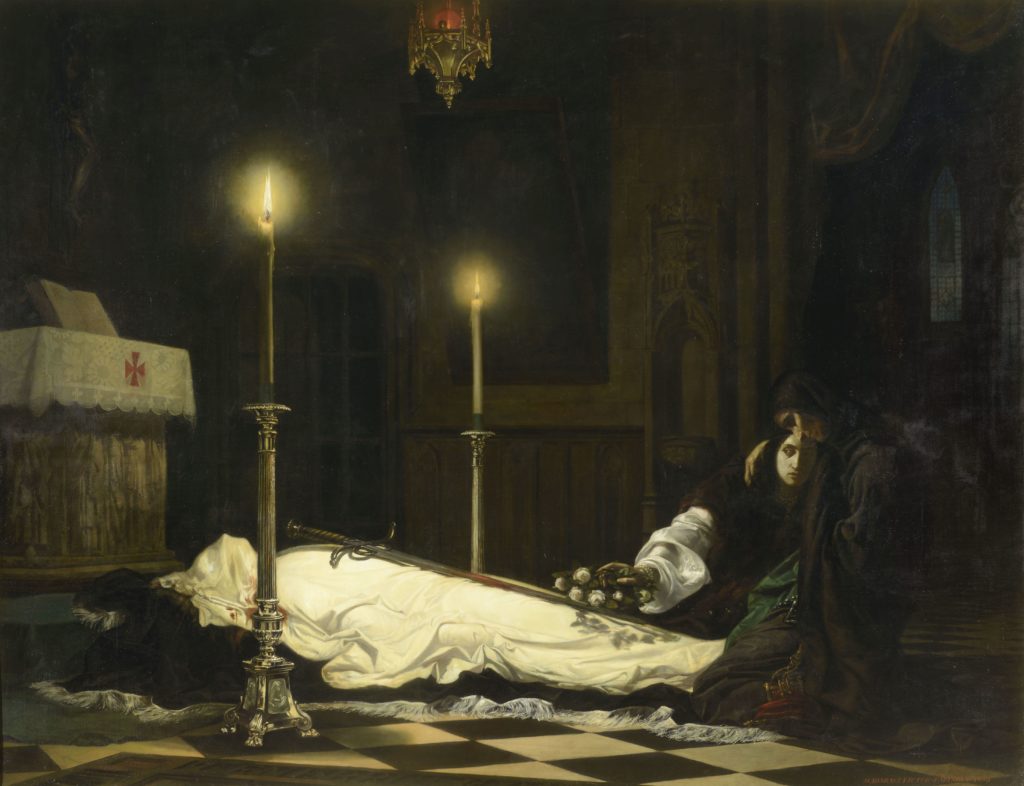We use cookies to provide you with the best possible service and a user-friendly website.
Please find our Privacy Policy on data protection and data management here
Please find more information on the cookies here
Ferenc Erkel, the father of the Hungarian grand opera, was born on 7 November in 1810. Since 2013, this day has been the Day of Hungarian Opera. When we talk about Hungarian opera, most Hungarians think of Ferenc Erkel’s works: his Ban Bánk and László Hunyadi. It is worth looking at the cover of the record sleeve or CD cover of these operas: those made for Ban Bank typically show a portrait of the opera’s heroic tenor, mostly that of József Simándi, while the László Hunyadi editions are decorated with a painting by either Viktor Madarász or Gyula Benczúr, two works that are displayed within a few metres of each other at the permanent exhibition of the Hungarian National Gallery.

Gyula Benczúr: László Hunyadi’s Farewell, 1866, oil on canvas, 147 x 121 cm, Hungarian National Gallery
The nineteenth century was the great era of opera in Hungary and all of Europe. It was the period when operatic works by Wagner, Verdi, Mussorgsky and Erkel, among others, were composed and continue to define the self-image of the respective nations to this day. Grand national operas express the historical past, longings and ideals of nations in the same way as historical paintings do. It is perhaps no coincidence that the revival of historical painting in the years around 1830 was closely linked to the renewed impetus in historical science. To simplify things, we could say that from that time onwards artists, writers and historians together built up the world of the historical past that was spectacular, while being authentic in every detail and no longer assigning the main role to ideals but real, flesh and blood people. Simultaneously, history emerged as a fashionable trend in modern mass culture, from the novels and stage plays of these years to the operas. “History is the religion of our times,” declared Wilhelm Kaulbach, a professor at the Academy of Fine Arts in Munich, and indeed, this is equally manifest in the painting and the music of the period.

Viktor Madarász: Mourning for László Hunyadi, 1859, oil on canvas, 243 x 311.5 cm, Hungarian National Gallery
It is self-evident that from the mid-20th century onwards, the best choice for pictures to decorate the record sleeves of a classical opera were spectacular 19th-century paintings. In the case of Erkel’s László Hunyadi the selected pictures were two Hungarian masterpieces painted on the subject of Hunyadi: one by Viktor Madarász and the other by Gyula Benczúr. Madarász completed his Mourning for László Hunyadi in 1859 in Paris. The composition is built on a single central motif: the dramatic contrast of a dark funerary chapel and Hunyadi’s dead body covered with a white shroud. Madarász’s monumental painting focuses on a dead hero (more accurately, a Hungarian hero who the Habsburg king, Ladislaus Posthumous, ordered to be executed), through which he conveyed the public sentiment in Hungary in the years around 1860: that of hopelessness, injustice done to the Hungarian nation, the king’s betrayal, and the moral command to remember the dead martyrs. Benczúr’s painted his work titled László Hunyadi’s Farewell in 1866. While made only a few years after Madarász’s piece, it conveys the historical approach of a very different era and an altogether different generation. Madarász, born in 1830, was a child of the revolution of 1848, whereas for Benczúr, who was born in 1844, the same revolution represented barely more than a faint childhood memory. Benczúr was already a member of the generation of the Austro-Hungarian Compromise of 1867. He was not seeking heroes and scenes of tragic Hungarian history but rather people showing the way to the future. Benczúr shows László Hunyadi going to his death as a very different hero than the one depicted by Madarász. His hero is still alive and an active participant of the scene, thus being able to address his loyal subjects and, albeit only symbolically, speak to the viewers and assure everyone before stepping onto the scaffold or singing farewell in a grand aria. Whatever is about to happen to Benczúr’s hero, he can still give something to people for the road, but the same cannot be expected of Madarász’s dead Hunyadi. But do not lose heart: Erkel’s opera is always here to listen to.
7 November 2018


